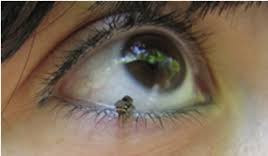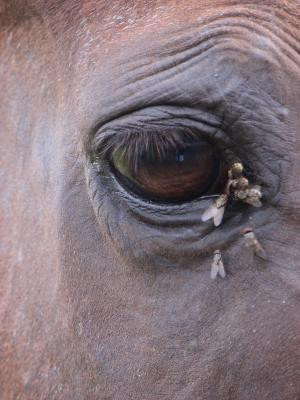It’s a universal annoyance: you’re trying to enjoy your food, relax, or simply exist, and suddenly, a tiny fruit fly is buzzing right in front of your face. It’s like they’re magnetically drawn to your personal space, especially your eyes, nose, and mouth. But Why Do Fruit Flies Fly In Your Face? Understanding their motivations can help you not only grasp this irritating behavior but also take steps to minimize it.
[]()
The Fruit Fly’s Sensory World: What Attracts Them?
Fruit flies, like many insects, navigate their world through a sophisticated sensory system. Several factors contribute to their seemingly targeted flight paths towards our faces:
-
Carbon Dioxide (CO2) Detection: One of the primary attractants is the carbon dioxide we exhale. Fruit flies are highly sensitive to CO2, which signals the presence of living organisms – and potential food sources or moisture. Your breath is a constant plume of CO2, acting like a beacon for these tiny insects.
-
Moisture Needs: Fruit flies have sponge-like mouthparts and are adapted to a liquid diet. They need moisture to survive, and they are constantly seeking it. Our eyes, nostrils, and mouths are natural sources of moisture, especially in drier environments. The corners of your eyes or the saliva on your lips can be an irresistible drink for a thirsty fruit fly.
-
Attractive Scents: While fruit flies are famously drawn to fermenting fruit (hence their name), they are also attracted to a range of other odors. These can include the smells of food on your breath, lotions or perfumes you might be wearing, or even just the general scent of human skin. To a fruit fly, these smells can indicate potential food or breeding sites.
Fruit Flies’ Feeding Habits: Why Your Face is a Target
To understand why fruit flies are so persistent around our faces, it’s important to know how they eat. Fruit flies lack chewing mouthparts. Instead, they have labella, sponge-like structures that they use to lap up liquids. For solid food, they employ a rather unappetizing method:
“The house fly dabs the tasty morsel with digestive enzymes by bringing up a little regurgitated food and saliva. The enzymes begin breaking down the solid food, gradually turning it into a slurry the house fly can then lap up.”
This process of pre-digestion requires moisture. When a fruit fly lands on your face, it may be investigating potential food sources, but it is also very likely looking for hydration. The moisture around your eyes or mouth is easily accessible and crucial for their survival, especially given their liquid diet and high water needs.
[ post-88603-0-86348400-1480134628.jpeg](
post-88603-0-86348400-1480134628.jpeg]( post-88603-0-86348400-1480134628.jpeg)
post-88603-0-86348400-1480134628.jpeg)
Beyond Annoyance: Coexistence with Fruit Flies
While it’s unlikely you’ll ever completely eliminate fruit flies, understanding why they are attracted to your face can help you manage their presence. Keeping your environment clean, especially around food and sugary drinks, reducing standing water, and using fruit fly traps can all help.
Ultimately, a fruit fly landing on your face isn’t a personal attack. It’s simply an insect following its instincts to find food, water, and a suitable place to breed. By understanding their needs, we can better coexist with these tiny, albeit irritating, creatures.
